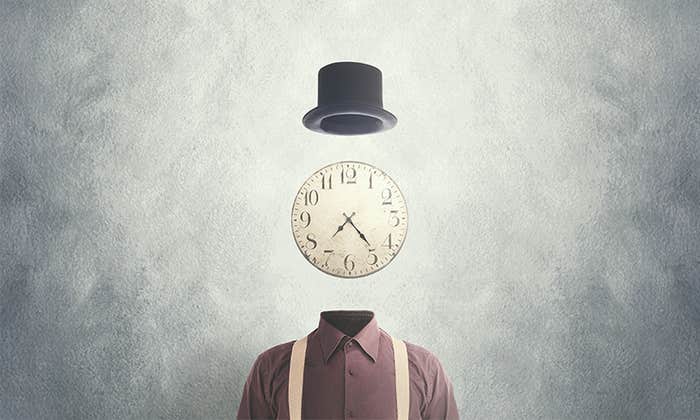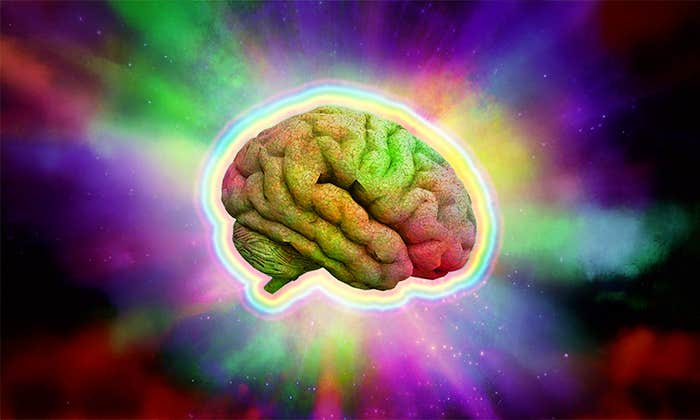You’ve heard it before: Symmetrical faces are more beautiful, healthy, and genetically fit than others. But this story misses some important details. For one thing, the human brain is not programmed to dwell on individual aspects of the face. Instead, says Margaret Livingstone, neurobiology professor at Harvard Medical School, we process faces holistically, rather than focusing on specific parts.
What’s more, that holistic processing itself is asymmetrical, and scans from left to right. David Perrett, professor at St. Andrews University’s School of Psychology and Neuroscience, showed subjects blended faces, with the left half derived from a man and the right half from a woman.1 Very few people noticed that the two sides were different, but the majority still judged the face to be masculine, suggesting that more time was spent processing the left half of the face.
This occurs, Perrett explains, because the left side of our sensory space (what we see to our left) is processed initially mostly by the right side of our brain, where many more specialized facial recognition functions are found. The fusiform face area of the brain, for example, is thought to play a key role in facial recognition, and is larger in the right hemisphere.2 When looking at a face, Perrett concludes, “I think because we are busy processing one side at one time, we don’t notice the left-right differences.”
Claus-Christian Carbon, a professor of psychology at the University of Bamberg, in Germany, has spent much of his career studying aesthetics, facial processing, and recognition. In particular, he has researched what makes faces—including those of celebrities—recognizable and appealing. He takes us on a tour of the symmetries and asymmetries of six celebrity faces, explaining how we process and perceive them.
Under each face is a slider, which you can use to change how the celebrity looks. Slide it all the way to the left to replace the right side of their face by a mirror image of their left side. Slide it all the way to the right to see the reverse.
The most noticeable features of English singer-songwriter Thom Yorke’s face are his eyes: One is clearly different from the other. This is especially obvious to us, Carbon says, because we are more likely to notice differences close to the Y-axis, or the vertical line that divides the face in half. In other words, we notice asymmetrical noses and eyes far more easily than different-sized ears.
Most people would think of Meryl Streep’s face as very symmetrical. But her nose leans slightly to the left and her mouth is offset slightly to the right. These minor imperfections in the symmetry of her face might just help her as an actress, says Carbon. “If you have a very symmetric, very easy to process face, then you have one problem: You won’t be remembered so well,” he says. This is because we recall faces by their differences, by what makes them distinct from one another. The asymmetries make her face unique, help her stand out, and add to her appeal. “The little imperfections of her face can be [read] as a sign of authenticity,” he adds.
Evolutionary biologist Randy Thornhill of the University of New Mexico has been studying faces for 20 years and found that both men and women perceived members of the opposite sex with symmetrical faces as more attractive and in better health. But perfection can be a little boring, and slight asymmetries can make someone’s face appear very alluring, Carbon says. Case in point: Cindy Crawford. “You always need, like with artwork or a good design, something where your eye is a little bit ‘catched’ and with moles, it’s very easy to catch the eye.” In other words, he says, the mole helps turn her pretty face into an unforgettable one. But, giving Cindy Crawford two beauty spots to make her face perfectly symmetrical—as you can see above—makes her look rather strange.
Gordon Ramsay clearly has an asymmetric face. Perhaps these distinctions result from his difficult and impoverished childhood. “There is [some] work that suggests people who grow up in harsher environments develop more asymmetric faces, potentially because of poor nutrition and serious illness,” says Benedict Jones, professor of psychology at the University of Glasgow, who studies the biological and social factors underlying face perception. A 2011 study4 in Economics and Human Biology found a correlation between asymmetric faces and more deprived childhoods.
There are many ways to offset or draw attention away from uneven facial features, but asymmetrical hairstyles are the most commonly used technique, says Carbon. Tina Fey’s lopsided parted bangs are a good example of this. Carbon adds that slight facial imperfections can also be useful to comedians. Much like actors, comics can use their appearances (like a crooked smile) during a show to make people laugh. “Dynamic asymmetries are helpful to express something very funny,” Carbon says.
As people age, their facial asymmetries become more pronounced, and Harrison Ford is no different. “The asymmetry in his face has increased over the years,” says Carbon, “but he still has a very appealing, [though] clearly asymmetric, mouth region.” Even though no one is safe from the long-term effects of gravity, some do seem to fare a little better than others.
References
1. Butler, S., Gilchrist, I.D., Burt, D.M., Perrett, D.I., Jones, E., & Harvey, M. Are the perceptual biases found in chimeric face processing reflected in eye-movement patterns? Neuropsychologia 43, 52-59 (2005).
2. Kanwisher, N., McDermott, J., & Chun, M.M. The fusiform face area: a module in human extrastriate cortex specialized for face perception. The Journal of Neuroscience 17, 4302-4311 (1997).
3. Grammer, K. & Thornhill, R. Human (Homo sapiens) facial attractiveness and sexual selection: The role of symmetry and averageness. Journal of Comparative Psychology 108, 233-242 (1994).
4. Hope, D., Bates, T., Penke, L., Gow, A., Starr, J.M., & Deary, I.J. Symmetry of the face in old age reflects childhood social status. Economics and Human Biology 11, 236-244 (2013).
Photos of Thom Yorke, Meryl Streep, Gordon Ramsay, and Harrison Ford from Getty Images; photo of Cindy Crawford from WireImage; and photo of Tina Fey from FilmMagic.























